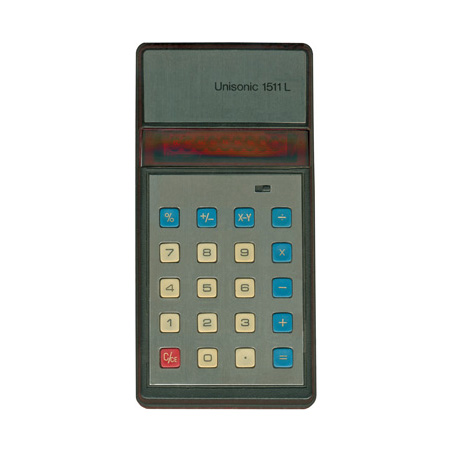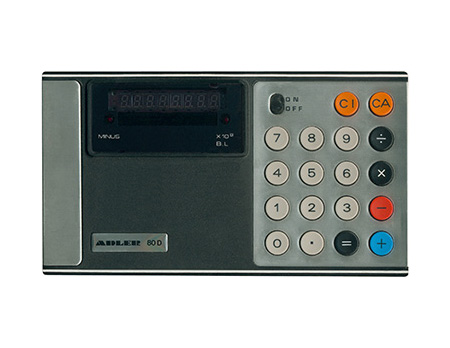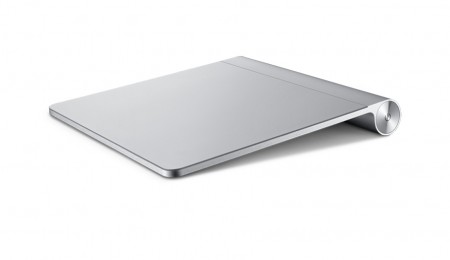





Vintage Technology has an enormous array of 1970’s era calculators on display. I’m into it because I love numbers, but if you want to know how many diodes and capacitors there were in a Caltronic 812, you are in luck. Each comes with a photo and an extraordinarily detailed reference page. There are 128 identified brands, and 583 calculators in total!
As an aside, I used to love calculators with an on/off button. I hated the kind that would turn off in a minute or two when unused. I mean I get it, but I like the power of having an on/off.
You may recognize the Omron from an earlier post. I’m sad Braun wasn’t represented on this page too…
via Core77


So Apple has just announced a giant trackpad titled the Magic Trackpad. It supports a full set of gestures; two-finger scrolling, pinching to zoom, rotating your fingertips, tapping is clicking, and so on—you get the idea. Of course it looks amazing because its an Apple product, but I question its practicality among designers/photographers. I get that Apple is trying to push technology into a more physically interactive realm but would you actually use this in replace of your mouse or tablet?
Personally I don’t think I could make the switch. I for one hate the trackpad for lack of control and use a mouse whenever possible. I think if I were to change my setup at all, I would probably have to add a tablet or purchase one of the new 12-Core MacPro’s.


You may have noticed that I’ve posted quite a bit on the subject of SSD drives over the past couple years. The speed this technology can afford has the potential to finally set us free as artists so that we can focus on our work and not beach balls and hourglasses. The main bottleneck of modern computers is the hard disk drive, which has inexplicably been frozen in time at speeds which have remained constant almost as long as I can remember. Remove this bottleneck and a whole new world opens up.
The problem with SSD so far is it’s failure to truly deliver on it’s promises of speed. Sure, 250MB/s is fast, but only marginally quicker than a standard HDD. So I was excited to see the announcement from OCZ that a new version of their Z-Drive, the “R2” is due out soon.
The original Z-Drive was somewhat of a disappointment but — at least from the specs on this one — they seem to have learned some lessons from that initial attempt. The new model sports an 8 way RAID 0 setup (basically like 8 SSD drives in RAID 0 on a hardware controller — beats the heck out of my setup) — and speeds around 1.4GB/s. In case you didn’t read that correctly: 1.4GB/s. Insane speeds. And that’s both ways, read and write.
Imagine having this thing set up as your Photoshop swap drive (or, as the Engadget article suggests, editing raw 1080p footage in real time). In PS, I’d imagine you could tear through 24×36″ @ 300dpi with hardly a delay. And at 2TB (the largest possibly configuration), the Z-Drive is truly massive for an SSD. You could fit your entire OS and your data on there for quick file open/saves. And with 1.4GB/s of overhead, I wouldn’t think twice about using the drive as my OS and swap at the same time.
Now for the price (which hasn’t been announced yet): expect ridiculous. The original model ranged from $1500-$2700 and I don’t see this one coming too far down from that. But for performance like this, you have to pay. And when you consider the potential cost of eight SSD drives totaling 2TB and a hardware RAID controller the Z-Drive starts to sound a bit more affordable.
OCZ Product page
Further reading at Engadget & Hot Hardware










